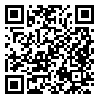Articles accepted at the time of publication
Back to the articles list |
Back to browse issues page
Assistant Professor at Harat-e Masoumeh University, Qom, Iran , gh_medadian@yahoo.com
Abstract: (2188 Views)
This study investigates the impact of translational contact on use of epistemic modality in Persian translations and originals in the genre of education. Our findings show that the frequency and distribution of epistemic markers (especially, hedges) in the English texts is considerably higher than those of the Persian translations and originals. However, this has changed in the period of some sixty years, and Persian texts have become noticeably similar to English texts. Upon investigation of the ways translators rendered the epistemic uses of English modal auxiliaries (e.g., may, must, etc.) we found that translators in the 2006–2015 time farme have omitted fewer epitemic modals and translated fewer of them into Persian modals of higher confidence than translators in 1957–1968 time frame. These findings suggest that as the translational contact between English and Persian prolonged translated and original Persian texts have relatively converged towards the communicative preferences of English and have become more addressee-oriented. In fact, the addresee orientation of has first leaked into Persian translations and then has found its way into Persian originals. Weakening of cultural filtering in Persian translations has facilitated this process.
Keywords: epistemic modality, reader orientation, content orientation, translational contact, communicative preferences
Article Type: مقالات علمی پژوهشی |
Subject:
Linguistics
Send email to the article author
| Rights and permissions | |
 |
This work is licensed under a Creative Commons Attribution-NonCommercial 4.0 International License. |








